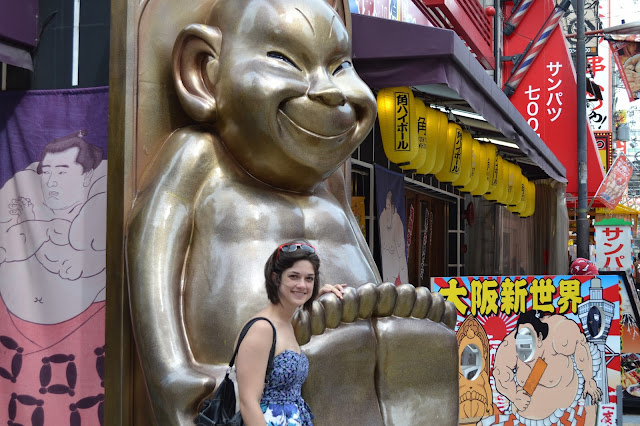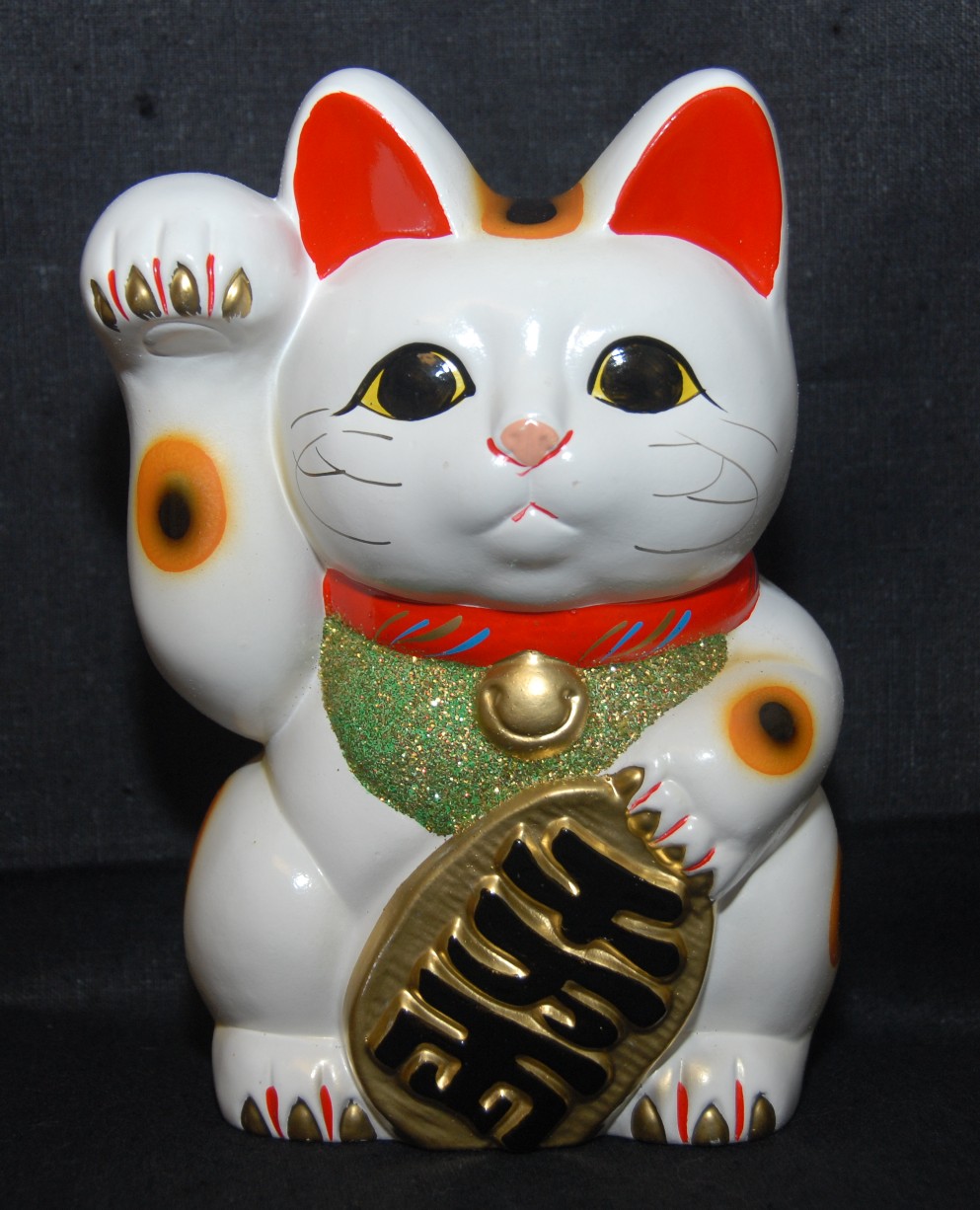First off was the Shitenno-ji Temple. Whaa? Another temple?!
Now, I know what you're thinking. This one is special, and I'll tell you why... it's the very first Buddhist temple in Japan, built in 593 by a lovely gentleman known as Prince Shotoku. Small disclaimer -- none of the original temple exists... the last bit was rebuilt in the 1960s.
Prince Shotoku was part of the Soga family, who desired to spread Buddhism throughout all of Japan. They had tried earlier but in what turned out to be a pretty big PR disaster, a plague broke out just as Buddhism was picking up. Another issue was that a rival Japanese clan, the Mononobe family, was all about the Shintoism because they held some official Shinto positions. What's two disagreeing clans to do, especially when it comes to religion? Why have a battle, of course!
Together, Soga Umako (the chieftan of the Soga clan) and Prince Shotoku (nephew of Soga Umako) lead their clan to victory. If you buy the Shotoku version, he won the war by praying to the Shitenno (four Buddhist heavenly guardian kings) and offering them a deal... "I'll build you a temple if I win this one, guys!" Guess who won? No, really, guess. You're right (unless you said Mononobe... then you're wrong and obviously didn't read the first part of this paragraph). Soga Umako put his sister, Empress Suiko, on the throne and she, in turn, made Prince Shotoku the regent. And thus began his lineage and the lifelong building of Buddhist temples.
I tried to get fancy with this one...
The above few photos also show the Eirei-do, which was a structure for a big bell created to respect Prince Shotoku. After WW2, the bell was "offered" to the government, the place signifies praying for peace of the world.
Wandering around, we also found a lecture hall (Koudou) that had a really cool pebble yard.
Additionally, I gazed from afar (not really feeling like paying the entry fee) of the Garan complex with a 5-story pagoda called Gojunoto. I believe that inside are the remains of Prince Shotoku (or something like that) and probably a few pretty neat Buddhist things that we aren't allowed to take photos of. You know the drill.
There was also a little pond filled with turtles. It was obvious they were captives to the human race, because when we walked over to look at them, they all furiously swam to get some food. Little did they know that we had no food to speak of... suckers.
The Gokuraku-jodo Garden was offset from the temple, but was designed based on descriptions of the "Western Paradise of Amida Buddha". I looked up the description, and apparently it is a land of beauty that surpasses all other realms. It (Wikipedia) also states that entering the Pure Land is the equivalent of attaining enlightenment... boom.
With the excitement of entering an area reserved for the enlightened behind me, I headed to an area of town called Shinsekai.
This wasn't really the real entrance, because it had a much cooler sign than this 1980s version, but there you go. Shinsekai was originally the "New World", as it was created before WW2 when the Industrial Exposition was held here. Then World War 2 happened and it became its new visage... a seedy, slum-town... and I went there. It was quite interesting to see that in Japan, since they are usually so careful about image. Honestly it wasn't much more dangerous than other parts of Tokyo, but it did look very run down. When it was first created, Shinsekai was designed to look one part Paris and two parts Coney Island. The Coney Island part was filled with stalls serving Osaka's famous food kushikatsu (fried food) -- of which I had none. I know. Pathetic.
I am not sure why I failed to take a photo of it, but the Paris version of Shinsekai includes the Tsutenkaku Tower (Shinsekai's version of the Eiffel Tower)... shamelessly I stole a photograph from someone who left their watermark on it.
I also got my photo taken with Biliken, which is not even a Japanese creation! This scary creature was dreamed up by an American woman and represents "The God of Things as They Ought To Be." I guess if you rub its feet, you'll get good luck.
Unfortunately, I didn't get to see everything else in Osaka because torrential downpours from our friendly local typhoon hit us.... but fear not. If I return again, I'll be sure to hit those places up and type a few (ok, a lot) of words about it.






























